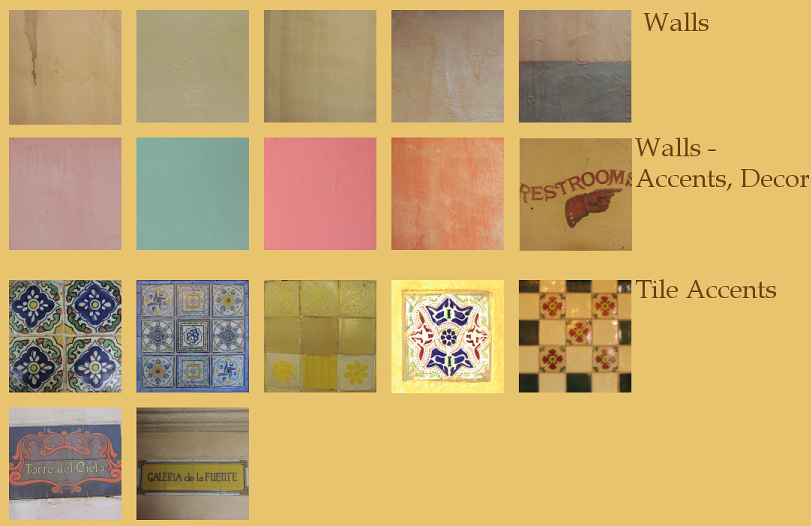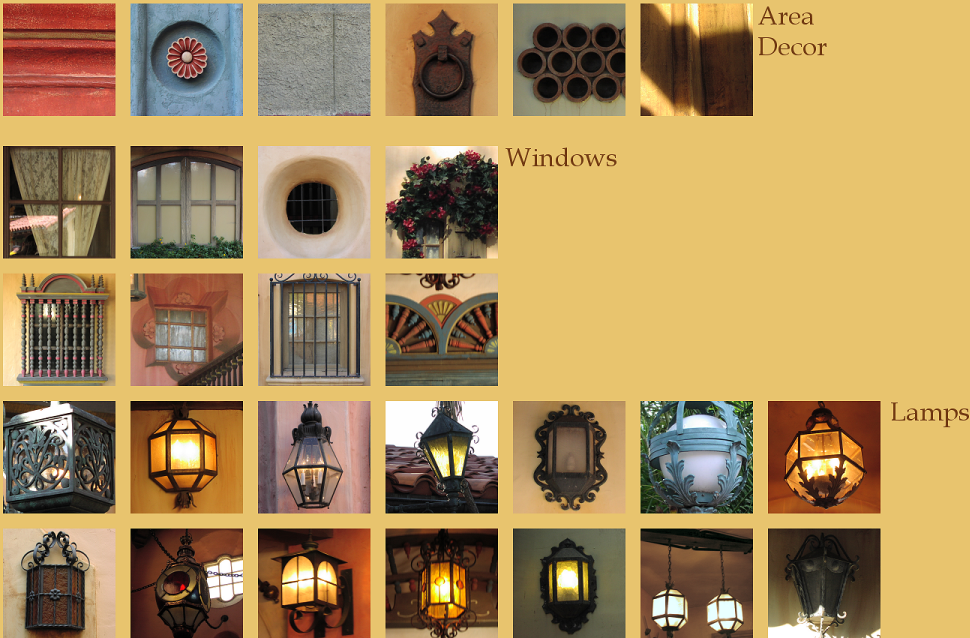
Around the side of the Cane, Rattan, Wicker & Suns shop, sandwiched between it and the Toledo Arts spanish antiques store, is the shopper's mecca for anybody at Walt Disney World who needed to buy a basket - the Southern Craft Company itself.
A brief word about the Craft Company. It opened in 1977 or early 1978, and replaced one of the Village's earliest disappearances, along with the Collonadde des Artes: Von Otto's Antiques. In contrast to the Magic Kingdom's antique shop, Von Otto's store was neither as artfully cluttered nor as interesting, but the name of his shop was printed on a coffee grinder (!). Nobody knows what happened to Von Otto or his antiques, but the Craft Company did stay in business for almost twenty years.

Those familiar with the Downtown Disney Marketplace today may have trouble placing this structure on account of her shaded veranda; this space is currently occupied by the Marketplace Guest Relations. Disney cut off the veranda in the mid 1990's, when she was removing all of the Village's original breezeways, terraces and porches. One of the decorative medterranian statues which once littered the Village is visible in front of the Craft Company.

As you can see, nobody had anything on the Southern Craft Company for clutter. A 1981 Village guidemap boasts of the Craft Company's "assortment of kits and supplies for quilting, macrame, latch hook and needlepoint; leathersmith and silversmith; a variety of other handmade crafts; plus Lillie Langtry's old-fashioned photo studio". And yes, that's right, for many years Village guests could get their old-timey photo taken here, just like in the hospitality house on Main Street. Except instead of a Polariod 8 1/2 x 11 camera, Lillie Langtry used a real antique camera and setting.
In the late 1980's or early 1990's, the Southern Craft Company moved a few yards West, occupying the space which originally housed 2R's - Read'n & Rite'n, on the endcap of that building. Here is a picture taken in that second location, where once again baskets and stained glass are on display, this time in a more open and bright environment with a memorable skylight and central wooden crossbeams. Lillie Langtry failed to make the migration.

By the mid-1990's, the Southern Craft Company was gone and the space housed a number of temporary tenants, including Discover, one of those "conservation" themed stores that were popular in the 1990's.

In 1996, Basin, a London-based specialty soap company, moved into this second Craft Company location and has remained for the last 14 years. The skylight and central wooden crossbeams from which baskets once hung can still be observed today.














